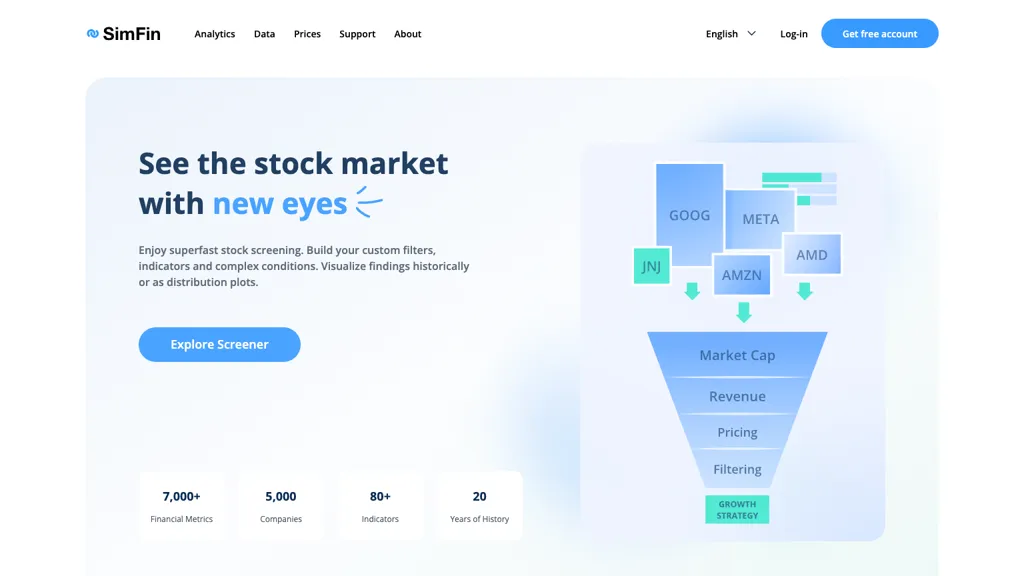Top 10 Tips To Assess The Customer Service Of Ai Stock-Predicting/Analyzing Trading Platforms
Customer support is a critical element when deciding on a AI stock Predicting/Analyzing trading platform. Reliable and responsive support can make a significant difference in solving problems, optimizing utilization of the platform and ensuring an enjoyable trading experience. These are the top 10 guidelines for assessing the customer support offered by these platforms:
1. Review Support Availability
24/7 Support: Find out whether the platform offers round-the-clock support. It is very important, especially for trading on international markets.
Business hours: If 24/7 support isn't offered, make sure that support is available during business hours.
Look for coverage of the holidays.
2. Test Response Times
Initial response: Contact support with an initial query to see how quickly they respond.
Think about the time it will take to find solutions, and not just acknowledge them.
Live chat: Test the effectiveness and responsiveness of the live chat service.
3. Assess the Support Channels
Multiple channels: Ensure that the platform has support available via various channels (e.g., email, phone or live chat, as well as social media).
Find the channel you prefer to see if it is accessible and reliable.
Self-service Solutions: To resolve issues quickly, utilize an extensive Knowledge Base including FAQs, Community Forums.
4. Evaluate the Support Quality
Experience: Ensure that support agents have a complete knowledge of the platform trading, technical and other issues.
Problem-solving: Evaluate whether support agents are able to effectively solve complex issues or escalate them appropriately.
Professionalism Examine whether the interactions with support have been professional, courteous and helpful.
5. Check for Account Managers
Premium support: Verify if the higher-tier plans or users from institutions have access to account managers.
Account managers should offer individualized support and proactive advice.
Relationship Building: Ensure that your account managers that you work with are available at all times. You can also develop connections over time.
Review Documentation
Knowledge base: Make sure whether the platform has an organized, searchable and comprehensive knowledge base, with tutorials and other guides.
Video tutorials - Check to see whether your platform provides videos, webinars or video tutorials that are suitable for visually learners.
API documentation. API documents are important for developers.
7. Evaluation of Peer and Community Support
Forums for users: Find out if there is an active user community or forum on the platform, where users can discuss tips and solutions.
Social media groups: Search for groups on unofficial social networks (e.g. Reddit. Facebook. LinkedIn), where users discuss the platform.
Community engagement: Determine if team members actively participate in forums or discussions in the community.
8. Evaluate Escalation Processes
Issues can be escalated: Make sure there is a process in place for escalated unresolved problems to higher levels of support or management.
Follow-up. Verify whether support is in contact when the issue is fixed.
Feedback loop: See whether feedback is gathered from users to improve the support services.
9. Test Support in critical situations
Contact Customer Support in times of high volatility to find out how they react.
Technical issues: Simulate a technical issue (e.g. login issues or discrepancy in data) to observe how support responds.
Trade executions: Verify whether support is able to assist with urgent trade-related issues (e.g. order failure or execution delays).
Use User Feedback to improve
Online reviews: Check out user reviews on platforms like copyright or G2 to get a feel about the overall level of satisfaction with customer service.
Seek out positive testimonials or case study highlighting the support experience.
Find out the way that the platform handles negative feedback and complaints.
Bonus Tips
Support for the trial period: To evaluate the quality of the system, you are able to test its support during the trial period, which is free.
Support in different languages: If you're not an English speaker, check if there is support available.
Training and onboarding. Find out if the platform has sessions available to help new users onboarding or train users.
Following these tips can help you assess the level of customer service provided by AI trading platforms which predict or analyze price fluctuations in stocks. You will then be able to select a company providing reliable, prompt, and efficient customer support. A strong customer service will improve your experience, and you will benefit from all options. Check out the top rated incite url for more recommendations including options ai, best ai trading software, ai chart analysis, ai investment platform, ai investing platform, investment ai, ai for investing, market ai, ai investment app, ai investing platform and more.

Top 10 Suggestions For Evaluating The Speed And Latency Of Ai Platform For Analyzing And Stock Predicting
Speed and latency is an important factor to consider when looking at AI stock prediction/analyzing trading platforms. This is especially important for high-frequency traders, algorithmic traders, and active traders. Even milliseconds in delay can negatively impact profitability and trade execution. Here are the top 10 tips for assessing the speed and latency of these platforms:
1. Real-time Data Feeds to be used for evaluation
Data delivery: Make sure that the platform can to deliver data in real time with a minimal delay (e.g. less than one millisecond).
The data source's proximity Determine whether the server of the platform is located near to major exchanges, which can reduce data transmission time.
Data compression: Check if your platform utilizes efficient techniques for data compression to speed up data delivery.
2. Test the speed of execution for trades
Processing time for orders: Check how quickly the platform processes and executes trades once you submit an order.
Direct Market Access: Make sure that the platform you are using offers DMA. DMA is a feature that allows you to transfer orders directly to exchanges, without intermediaries.
Execution reports: See if the platform provides comprehensive execution reports, such as timestamps for order submission, confirmation and fill.
3. Examine the Receptivity of Platforms
User interface (UI) Speed test the platform's response time to your inputs.
Updates to charts Make sure that the charts and visuals are updated in real-time without delay.
Mobile app performance. If you are using a smartphone app, it should perform similarly to its desktop counterpart.
4. Verify that the infrastructure is low-latency.
Server locations The platform should utilize high-speed, low-latency servers which are located close to major financial hubs or exchanges.
Co-location services: Find out whether the platform provides co-location, which allows the hosting of your trading algorithms on servers near to the exchange.
High-speed network: Check if the platform utilizes high-speed fibre-optic networks, or any other low latency technology.
5. Evaluating Simulation and Backtesting speed
Test the platform's capability to analyze and process the historical data.
Simulating latency: Make sure the platform can simulate trades with minimal delay.
Parallel processing: Determine if the platform uses parallel processing or distributed computing to speed up complicated calculations.
6. Calculate API Latency
API response time: Observing how fast the platform's API responds (e.g. getting market data or placing an order).
Rate limits: Verify that the API has adequate limits on rates in order to avoid delays when high-frequency trading takes place.
WebSocket support: Determine whether your platform is using WebSocket protocols for real-time, low-latency streaming of data.
7. Test the stability of the platform under load
High-volume trading: Simulate high-volume trading scenarios to see whether the platform is reliable and stable.
Market volatility Test the platform during times of extreme market volatility to see if it can handle rapid price fluctuations.
Utilize the tools available on the platform to stress test your strategies in extreme conditions.
8. Evaluate network and connectivity
Internet speed demands. Check that your internet connection meets standards for your platform to ensure the best performance.
Make sure there aren't any redundant connections.
VPN latency: If you are using a VPN be sure to check whether it causes significant latency and whether the platform offers alternatives.
9. Make sure you are aware of features that speed-optimize your computer.
Pre-trade Analyses: Ensure that the platform includes the pre-trade analysis in order to maximize order processing and execution speed.
Smart order route (SOR) The first step is to determine whether SOR is used by the platform to identify the most efficient and most cost-effective execution locations.
Monitoring of latency: Ensure that the platform allows you to track and analyze your latency live.
Benchmarks for User Feedback Review
User reviews: Read user feedback to gauge the platform's speed and latency performance.
Benchmarks from third parties: Search for independent benchmarks or reviews that evaluate the performance of the platform versus the speed of its rivals.
Case studies: Determine whether a platform offers instances or case studies that demonstrate the low-latency capabilities.
Bonus Tips
Use the free trial or demo period to evaluate your platform's speed and latency in real-world conditions.
Customer support: Make sure that the platform offers assistance for issues related to latency or for optimization.
Hardware specifications. Check if the platform is compatible with the hardware you are using like high-performance computers.
By following these tips that you will be able to assess the performance and speed of AI stock-predicting and analyzing trading platforms, ensuring you choose one that is compatible with your trading needs and minimizes the time it takes to complete. The ability to operate with low latency, especially in high frequency and algorithmic trading, is essential. Even small delays can dramatically impact the profitability. Read the recommended best ai penny stocks for blog advice including best AI stocks, best ai trading platform, AI stock prediction, best AI stocks to buy now, ai share trading, invest ai, best AI stocks to buy now, trading ai tool, ai trading tool, AI stock analysis and more.

Comments on “20 Free Ideas For Picking AI Stock Analysis Platforms”